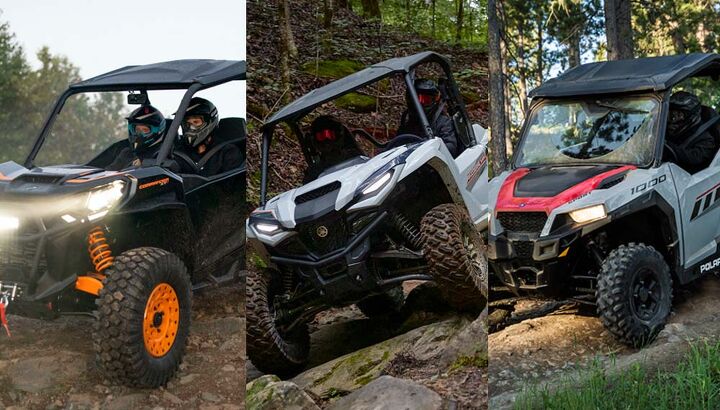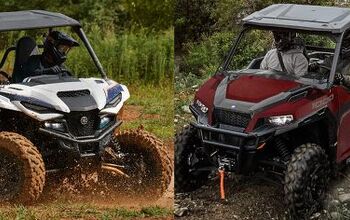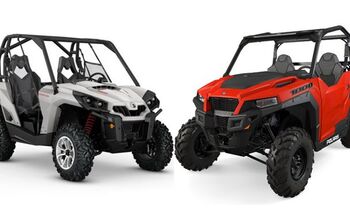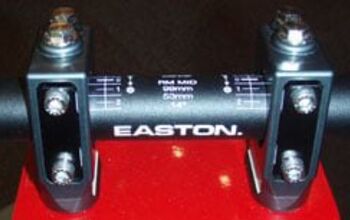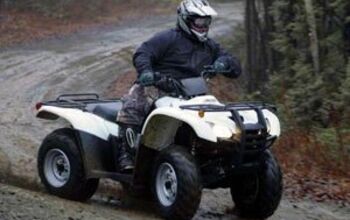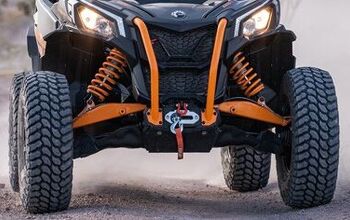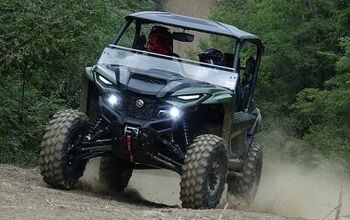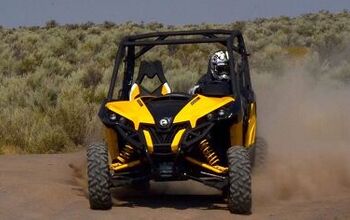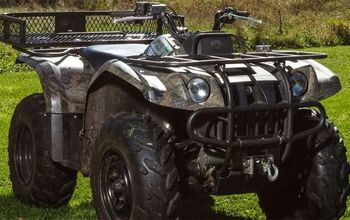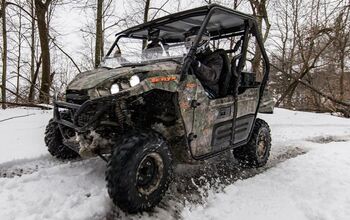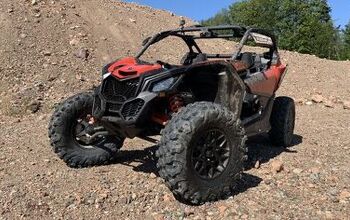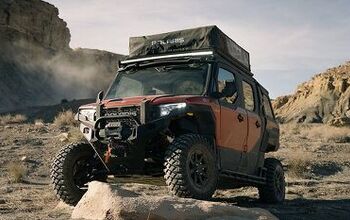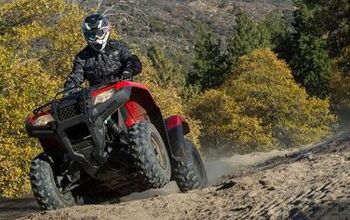Can-Am Commander DPS 1000R vs. Yamaha RMAX2 1000 vs. Polaris General 1000: By the Numbers
The new 2021 Can-Am Commander received a much-needed update and is ready to take on the Sport-Utility UTV segment. Let’s find out how it stacks up against the Yamaha RMAX2 1000 and Polaris General 1000 on paper.
Residing in what companies like to call the “Rec Ute” segment, these three machines blend hard-work capability with an aptitude for big-fun. It would seem the trio shown here take those motivational posters telling us to play as hard as we work quite seriously indeed.
For 2021, Can-Am has completely revamped its Commander line, moving the engine aft and taking more than a few pages from its Maverick Sport sibling. Yamaha enters this 1000-class with the RMAX2 and Polaris plays with its popular General.
For this post, we’re comparing the most affordable versions of each rig in this segment that features a 1000cc engine and have comparable specs. There are more expensive and more capable versions of these machines from each brand, but we’re sticking with the most financially accessible trims for now. We’ll cover the brawny options in a later post.
Yamaha Wolverine RMAX2 1000
Located in a fresh spot, the engine in the new 2021 Can-Am Commander DPS will be familiar to anyone who’s been in a Maverick Sport recently. It is a liquid-cooled V-Twin displacing 976cc and making 100 horsepower. A quick-response CVT has been tuned differently than the Maverick, permitting a less manic driving experience than in its sportier cousin.
At Yamaha, look for a 999cc Parallel Twin making just under 110 ponies. The cylinder configuration lends a unique sound to this author’s jaundiced ear, meaning your buddies will likely know it’s you tearing towards them on the trail. Its transmission is a typical Ultramatic v-belt unit with high and low range options.
Polaris chooses to install its 999cc Prostar in the General 1000, good for an even 100 horsepower. Like its competitors, this is also a 4-stroke Twin mated to a continuously variable transmission that likes to belt itself to the redline when pressed with wild abandon. Turf Mode helps manage wheel spin so operators don’t tear up the fairway while traversing the course.
Can-Am Commander DPS Suspension
Again taking several pages from the Maverick Sport, the 2021 Can-Am Commander DPS 1000R has double A-arms up front with 12.5 inches of suspension travel. Torsional trailing A-arms (TTA) setup is found out back providing half an inch more flex. Twin-tube gas-charged struts are installed at both ends, with snazzier suspenders available on more expensive trims. Tires are 27-inch XPS Trail Force (note the in-house brand) on 14-inch wheels.
RMAX2 customers will find an independent double wishbone suspension when they crawl under the front of their rig, plus an anti-sway bar and Fox-branded QS3 piggyback shocks. This is good for 14.2 inches of travel. A similar setup is found aft, absent the sway bar, with travel rising to an impressive 16.2 inches. Dirt Commander tires measuring a healthy 30 inches on 14-inch wheels are standard equipment.
Look for a dual A-arm configuration with a stabilizer bar up front on the Polaris, with 12.25 inches of travel, appended by ZF Sachs twin tube shocks and jazzy painted springs. Rear shocks and springs are similar but the setup is a dual-arm IRS with stabilizer bar. Travel increases to 13.2 inches here.
Polaris General 1000 Sport
We’ll present these figures in the same order for easy comparison (see – we’re looking out for you.) BRP sets the measurements of the Can-Am Commander DPS 1000 at 128.2 inches long, 62 inches wide, and 71.5 inches tall. Wheelbase checks in at 90.6 inches. Note that other versions of the 2021 Commander have slightly different numbers. Estimated dry weight is in the neighborhood of 1600 lbs. There is 12.5 inches of ground clearance.
Yamaha sets the measurements of the RMAX2 1000 at 119.3 inches long, 66.1 inches wide, and 77.8 inches tall. Wheelbase checks in at 86.7 inches. Note this is a marked difference from the Can-Am which will surely lead to squawking in the comment section. Estimated wet weight (tank full of gas, etc.) is listed as 1845 lbs. There is 13.8 inches of ground clearance.
Polaris sets the measurements of the General 1000 at 116.4 inches long, 62.5 inches wide, and 73.8 inches tall. Wheelbase checks in at 81.0 inches even. Despite the official width, note that Polaris lists this machine as having a ‘stance’ of 60 inches. Estimated dry weight is listed as 1422 lbs. There is 12.0 inches of ground clearance.
2021 Can-Am Commander DPS Profile
The Can-Am Commander provides a tilting box measuring 29.5 x 45.2 x 10.6 inches and able to carry 600 lbs worth of gear. It’s shaped, apparently, to accept a full-size spare tire. Total payload is 1030 lbs and towing capacity is 2000 lbs. Do the math if you’re planning on carrying max payload in the box plus a full trailer and a wingman.
The Yamaha in this specs comparison has identical tilting box and towing capacities as its Can-Am competitor – 600 lbs and 2000 lbs, respectively – proving that development of new Side-by-Sides rarely happens in a vacuum. Total payload capacity is 1100 pounds. Don’t forget that trailer tongue weight is about 10% of the trailer’s total mass.
General 1000 owners will be able to load … exactly the same amount of cargo into their rig’s tilting box as in the Can-Am and Yamaha. Polaris goes a step further to list total payload as 1100 pounds, an important number to keep in mind when calculating how heavy of a trailer one wants to haul. The hitch rating on this rig is 1500 lbs, by the way.
Engineers at Can-Am have imbued the 2021 Commander with a new set of clothes for this model year, ditching the old styling in favor of something that’s far more in line with everything else in the showroom. The entry-level DPS 1000R is available in one color – Tundra Green – but more shades are unlocked further up the food chain.
Yamaha beats to its own drum, giving the RMAX2 1000 narrow car-like LED signatures atop a set of blazing headlamps. That looks-like-a-scoop-but-isn’t on the hood does a convincing job of amping up the machine’s aggro personality. The YAMAHA billboard on the tailgate is bookended by a set of vertical tail lamps.
There’s no mistaking the General for anything but a Polaris, with rectangle headlights sunk into a couple of buckets and the trademark ‘V’ styling flourishes flowing back over the hood. The roll cage shares much with some other Polaris rigs, including a bolt upright section behind the driver in which one can affix a solid window or mesh net
Polaris General 1000 Sport Rear
This is a cutthroat segment, and these machines are priced accordingly. The 2021 Can-Am DPS 1000R stickers at $16,399 in America and should be shipping to dealers as you read this. Yamaha sticks to their guns and prices the RMAX2 1000 at $19,799 ostensibly to pay for the Fox-branded shocks and jumbo 30-inch tires. More affordable Wolverine models are offered with the 850-class engine. Polaris, meanwhile, has priced the General 1000 at $15,999.
More by Matthew Guy



